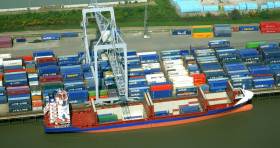Displaying items by tag: Rail freight multimodel
#RailBoost - DFDS the Danish logistics and shipping operator, has announced from this month a doubling of capacity on its weekly intermodal rail service between the Port of Waterford and Ballina, Co. Mayo.
The new capacity according to Multimodal News, will benefit DFDS customers in the west and north-west of Ireland in particular, as a cost effective alternative when compared to a road based shipping option. Coupled with this, the customer also reduces their carbon footprint.
Train timetables are to meet DFDS sailing schedules from Port of Waterford (Belview Terminal) to Rotterdam, which allows for onward delivery into Europe.
Customers can now load in the west of Ireland on Tuesday morning and deliver in Holland on Friday. Rotterdam also provides access to DFDS sailings to Norway, and rail connections to Italy and Turkey, allowing for a rail-sea-rail connection from Ballina to Milan and Istanbul.
Importers into Ireland will also benefit from this extra capacity, with the rail solution particularly suitable for bulk tank operators and also shippers of large volume to the west and north of Ireland.
With this important service addition, DFDS claim they are now the only truly multimodal operator on the island. Furthermore, DFDS are working with Irish Rail to develop its rail capacity by offering longer trains as trails of such operations are currently in progress.





























































